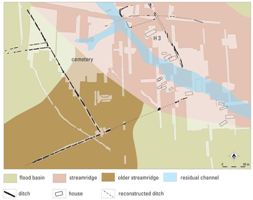
Figure 29: Enclosure ditches in Tiel-Passewaaij from the period AD 50-150 (after Heeren 2006, fig. 5.7).
Two types of enclosure ditches can be distinguished in Tiel-Passewaaij: short ditch systems within the settlement, and longer ditches outside the settlement. Enclosure ditches around farmyards and settlements had several different possible functions: drainage of water from the settlement terrain, water supply for livestock, and the distinction of some farmhouses from others by a separate enclosure (Vos 2009, 99). Small enclosures within farmyards may have been used as vegetable gardens, keeping livestock away from the crops.
Long ditches run from the settlement into the flood basin and can be up to several hundreds of metres long (Fig. 29; Heeren 2006, 68-70; Heeren 2009). Similar ditches are found in all rural settlements where archaeological excavation has explored the periphery of settlements, for instance in Wijk bij Duurstede-De Horden and Geldermalsen-Hondsgemet (Vos 2009, 102, 109-16; van Renswoude 2009, 106-7). These ditches were constructed during the 2nd century AD; in Tiel-Passewaaij the earliest ditches are dated between AD 90 and 120 (Heeren 2009, 240).

Figure 29: Enclosure ditches in Tiel-Passewaaij from the period AD 50-150 (after Heeren 2006, fig. 5.7).
Vos has studied the ditch system surrounding Wijk bij Duurstede-De Horden and recognises three factors in the construction of these ditches (2009, 115-16). First, rising water levels at the end of the 2nd century AD determined the lay-out and orientation of the ditches. Next, ditch systems reflect a more intensive land use. Finally, the Roman authorities had a need to assess the agrarian land and its potential production. The Roman authorities, in the form of the army, may have been involved in the actual creation of the ditch systems.
An increased need for water management may also have played a role in Tiel-Passewaaij. The orientation of the ditches, from streamridge to flood basin, could support this explanation. Also, the area seems to have become wetter during the period when the ditches were constructed. In another way, the enclosures provide a clue to the regularity of flooding of the flood basins: it is very unlikely that ditches would be dug in an area that was flooded during part of the year.
A more intensive land use can either be pastoral or arable. In the first case, an area enclosed by ditches may have contained livestock. This way, livestock could be grazed close to the settlement, which would be useful if animals were stabled overnight or if cows were milked. Alternatively, the ditches could have served to keep livestock off hayland. Heeren sees the earliest ditches as possibly indicating an intensification of livestock keeping (2009, 191). The area enclosed by ditches could also be an extension of the arable fields, and thus an intensification of arable agriculture. An argument in support of this theory is the increase in size and number of granaries that occurred in the same period when the ditches were constructed. The location of part of the ditches on an older streamridge, with better drainage and a slightly higher elevation, is another argument for a use as arable land.
Indications for the use of Roman measurements in the ditches around Tiel-Passewaaij suggest a relation to Roman land census and taxation (Heeren 2009, 245-52). The construction of ditches could also be related to a new need to demonstrate land claims or ownership. Increased population pressure could have played a role here (Heeren 2009, 241).
One fully enclosed area is located on the streamridge. This enclosure can be related to House 3 (phase 4). Again, the ditches could point to drainage, possibly to improve arable agriculture, or they could have served to control livestock. If the enclosed area was an arable field, drainage and keeping out livestock would both be desirable. An alternative explanation is that the enclosure was a training paddock for horses. Similar enclosed areas have been found at Geldermalsen-Hondsgemet (van Renswoude 2009, 101). Since no excavation trenches were dug on the higher parts of the streamridge, it is uncertain whether the arable fields here were enclosed as well (Heeren 2009).
© Internet Archaeology/Author(s)
URL: http://intarch.ac.uk/journal/issue27/5/3.2.2.html
Last updated: Tue Nov 10 2009